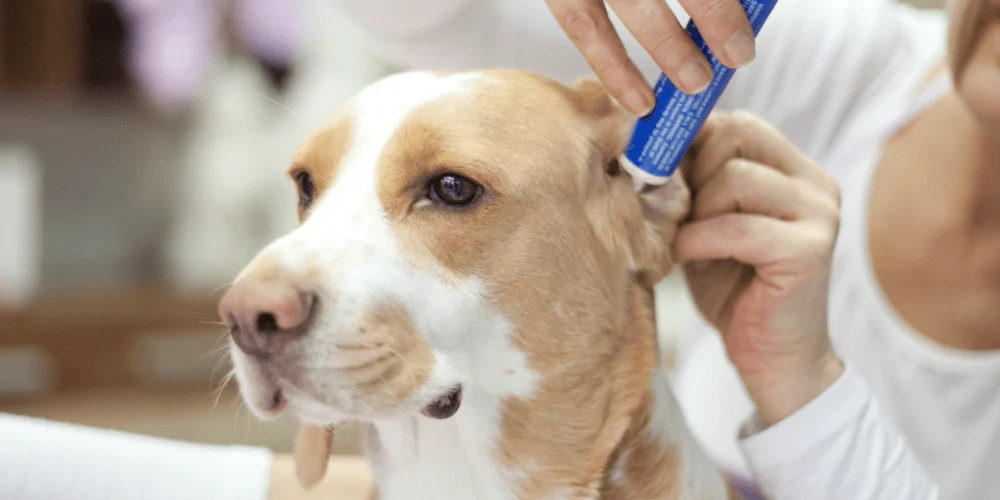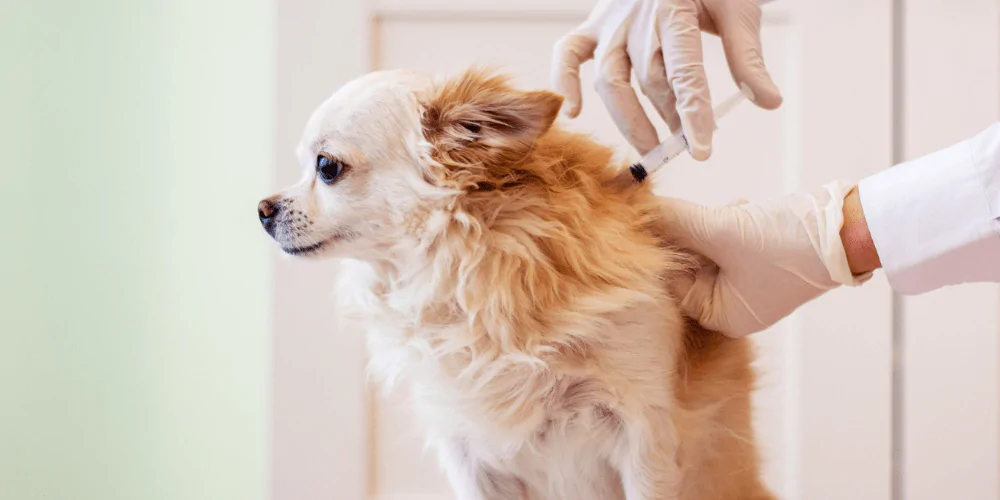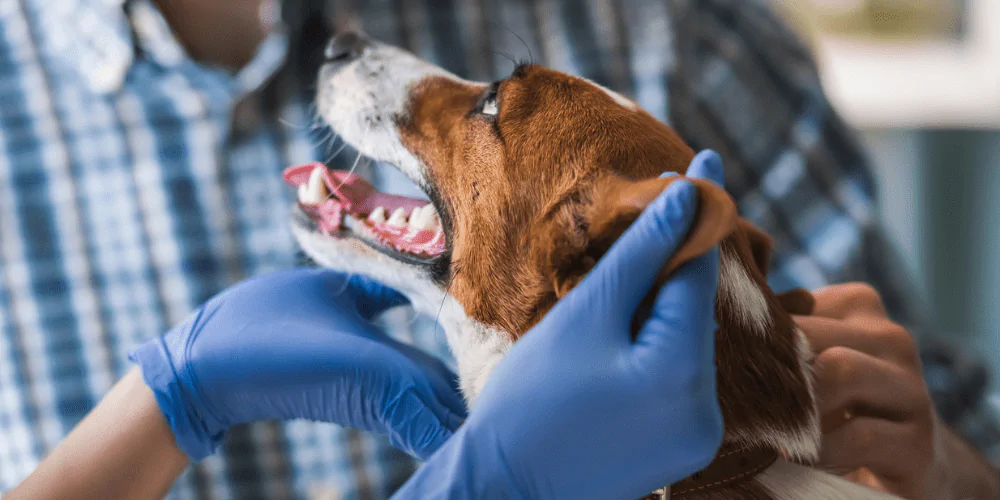
How to give your dog medicine

Dr Corinne Wigfall BVMBVS(Hons) BVMedSci(Hons)
13 February 2024 | 6 minutes read
From spitting it out, wriggling free, or simply hiding away, dogs have an impressive range of tactics to avoid their medicine.
But if your dog is sick, you need to be able to confidently give them their treatment. Read on to learn how to safely and calmly handle medicine time with expert tips from vet Dr Corinne.
- Before giving your dog medicine
> What kinds of medicine are given to dogs? - Getting set up to give your dog medicine
- How to give your dog different kinds of medicine
> How to give your dog a tablet
> How to give your dog liquid medicine
> How to give your dog topical treatment
> How to give a dog an injection
> How to give your dog ear medicine - How do you give medicine to a dog that refuses it?

Before giving your dog medicine
Getting to grips with your dog’s medicine is important before giving it to them. That means knowing the right dose and any potential side effects.
Your vet will always talk you through these ahead of time so you’re confident and knowledgeable about what you’re doing. They’ll also suggest techniques to help your specific dog feel more relaxed when it’s time to have their treatment.
Don’t forget to make the most of free vet video calls if your dog insurance provider offers this. You can ask the vet to virtually guide you through giving your pooch medicine at home.
> What kinds of medicine are given to dogs?
Medication isn’t just for when your dog is sick – it can also help to prevent problems from developing in the first place. Examples of treatments your dog could be given:
- Painkillers
- Antibiotics
- Anti-inflammatories
- Monthly flea and worming treatments
- Appetite stimulants
- Ear drops
- Calming remedies for canine anxiety
There are different ways that treatment can be given, with the main forms being:
Ointment and drops (topical)
Tablets, capsules, and suspensions (oral)
Injections
You may need to give one or all of these types of treatments at some point in your dog’s life, depending on their health needs.

Getting set up to give your dog medicine
Set yourself up for success by establishing a relaxed environment and routine for your dog to have their treatment.
- Create predictability by choosing a space they can recognise as their regular ‘medicine-taking’ area
- Pick a spot in your home that’s away from the main activity of the household and free from potential distractions (like windows)
- Put on some calming music and use pet-safe calming plug-ins if that helps your dog to settle
- Ask for help from a friend or relative comfortable with handling dogs
- Arrange all of your tools to be within easy reach

How to give your dog different kinds of medicine
Your dog can pick up on how you’re feeling, so try to stay as calm as you can. Focus on using a gentle, reassuring voice and rewarding them with a high-value treat after you’re done.
Follow all instructions that were given with the medicine and don’t be afraid to check with your vet if you’re unsure about anything.
> How to give your dog a tablet
To give your dog a tablet directly from your hand:
- Get your dog to sit upright on a non-slip surface or sit them on your/someone else’s lap.
- Gently place your hand over their snout with one hand and massage the side of their mouth to encourage it to open.
- Place the tablet as far back on your dog’s tongue as you can. Close their mouth and gently rub their throat to help the tablet go down.
If this doesn’t work, you could also try:
- Putting the tablet inside their favourite dog-safe snacks such as cheese, meats, or pate. Check they’ve swallowed the tablet and not spit it out.
- Crushing up the tablet and mixing it in with their usual meals. Check with your vet on this as some medicine has to be taken whole and can’t be crushed.
> How to give your dog liquid medicine
Giving your dog liquid medicine is very similar to tablets:
- Ask your dog to sit upright with their head tilted upwards.
- Position your hand on top of their snout and gently rub to encourage their mouth to open.
- Place the syringe in the inside pocket of their mouth and squirt in the medicine.
- Keep their mouth closed and slightly raised to make sure the medication is swallowed.
You may also be able to mix some liquid medicine into your dog’s normal meals. Again, make sure it’s all finished before you take the bowl away.
> How to give your dog topical treatment
Topical treatments are usually quite straightforward to do:
- Have your dog sit up or lie down, depending on the affected area of the body. You can use treats or toys to distract them while applying the ointment.
- Part the fur so you can see the skin and apply the correct amount of drops.
- Use a cone to prevent licking if the treated area is within your dog’s reach and keep other pets away while the medication soaks in.
> How to give a dog an injection
Remember to practice good hygiene and safety and always closely follow your vet’s guidance when using a needle.
- It’s recommended to have an assistant to keep your dog still and comfortable during the injection.
- Help your dog get into a comfortable position. Use your forefinger and thumb to pinch some loose skin around your dog’s neck or shoulders.
- Take the syringe in your dominant hand and angle the needle down to gently insert it into the skin fold.
- Push down the plunger to give the needed amount of treatment, then remove the needle and syringe together.
- Gently massage the injection area to calm the sting.
> How to give your dog ear medicine
Lots of dog parents have to help clean out their canine’s ears with drops, so here’s how to do it:
- Have your dog sit or stand with their head steady or have an assistant hold the head if they’re uncomfortable or nervous.
- Gently hold the tip of their ear and lift slightly to straighten the ear canal.
- With your other hand, carefully squeeze the drops into the ear. Be careful not to touch the skin with the dropper itself to prevent contamination.
- Massage the base of the ear for several seconds to help the medicine spread.
- Your dog may shake their ears after the drops have been given. This is normal and you don’t need to reapply extra medication.

How do you give medicine to a dog that refuses it?
It’s perfectly normal for your dog to be nervous about their medicine, especially if they’re in any pain or discomfort.
- Using pain medication for a few days can help to improve your dog’s willingness to take medication from you.
- Your vet can help you in the short term by giving your dog their medicine in the clinic. They can also suggest other forms of treatment, such as long-acting ear gels.
- Some dogs are fussy eaters and may need the tablets or capsules to be hidden in the ‘right’ kind of treat. So trialling a variety of treats can be helpful to see if your dog has a preference.
- Working with a qualified vet behaviourist to develop a training plan can help to erase your dog’s fear over time. Anti-anxiety medication may also be used to help with the training process.


